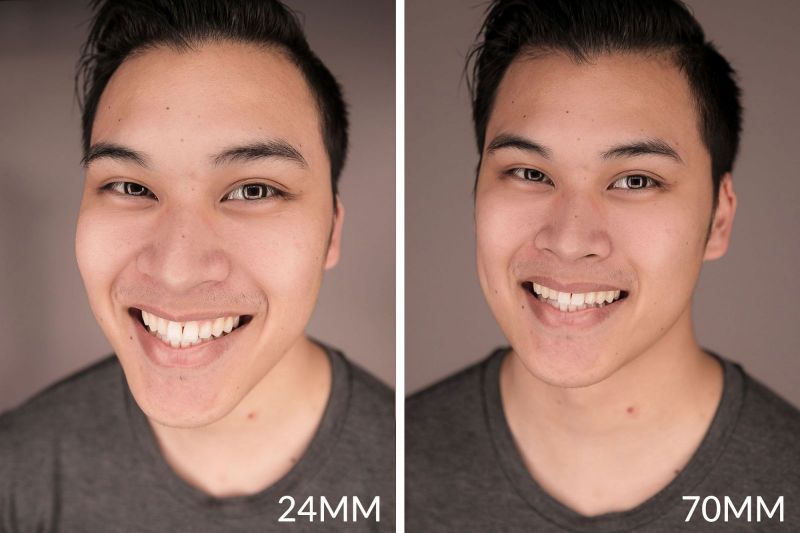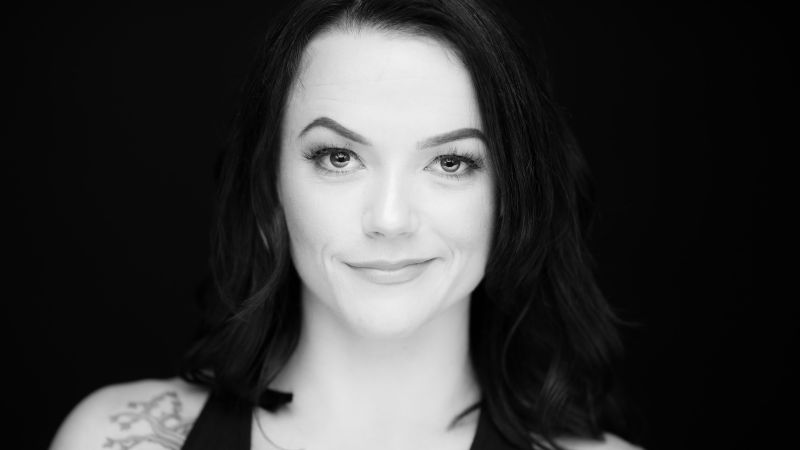
Last week we discussed our favorite lenses for headshot photography, and the most important variable was not whether a lens was the most expensive version it could be, but rather its focal length. There is a sweet spot in focal lengths for studio portraiture, especially in headshot photography where the subject’s face is the most important part of the image.
The reason our sweet spot lies where it does depends on which end of the spectrum we are discussing. When we go to wide, we introduce unflattering distortion to our subject’s face and when we go too long we get too far from our subject and lose the intimacy that can open our subjects up for authentic expression.
Too Wide
Of our favorite lenses, the least ideal is a 24-70mm. However, it’s a lens that many people who are established but are branching into headshot photography may already own. We would only recommend shooting headshots at the 70mm focal length of this lens, and even that is pushing it as far as distortion goes. If you were to shoot a headshot at 24mm close enough to fill the frame with the subject, you would be creating a bobble-headed caricature that is unlikely to be how you client wants to be represented.
Shooting at too wide of a focal length exaggerates any asymmetry in the subject’s face, significantly enlarges what is closest to the lens while reducing what is farthest, and exaggerates the distance between objects in the frame. This could be the distance between your subject’s neck and chin, for example – awkward.
If we zoom all the way out to 70mm, the image’s look will be much improved, but it’s still not giving us quite the look that we want for our headshot photography. To counteract this and work with what you’ve got if a 24-70mm is the lens that you own that’s best suited to headshot photography, we can step back a little and give the subject some headroom in the frame which we will crop into in post.
Just Right
Our other two favorite headshot lenses are telephoto primes – an 85mm and a 100mm Macro. These are ideal focal lengths for a headshot because they do not have the distortion issues inherent in a 24-70mm at a distance where we can fill the frame with our subject.
Too Long
If longer is better, is longest best? Not always.
The choice not to use an even longer telephoto focal length is less an aesthetic decision and more of a practicality of function. The longer the focal length, the further we must go from our subject to keep our desired framing. There are two potential issues with this with a headshot shoot. If shooting indoors, you only have so much space, and unless you’re lucky enough to be able to shoot in a large space, you may just find yourself literally up against a wall with nowhere left to go.
[REWIND:] HEADSHOT PHOTOGRAPHY TIPS | OUR THREE FAVORITE LENSES FOR HEADSHOT PHOTOGRAPHY
What’s more, when we back too far away from our subject we reduce communication. It becomes more difficult to interact with them which can be a confusing experience for a subject and certainly not what you would want to do to a paying client. Being too far from the client can create an awkward disconnect that makes it harder to pull out those elusive expressions that it’s our job to entice and capture, as fleeting as they are.
Our Recommendation
So, you can see that the role focal length plays in headshot photography is both tied to the subject’s physical appearance in photos and the overall client experience in-studio. We want to give our clients a great experience while we work with them and deliver flattering images, and for this reason, we recommend using a lens with a focal length in the 70mm-100mm range, preferably 85mm-100mm. If you’ve got a 70-200mm lens you can get optically great results, just be mindful of how far you are getting from your subject.
For more content like this and in more detail with video demonstration, be sure to check out our Headshot Photography 101 workshop and if you’d like access to our full collection of Premium workshops, become a subscriber!








Get Connected!